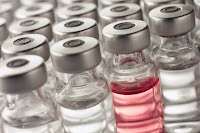Differences between hormonal treatment and chemotherapy:
Hormonal therapy is the mainstay of treatment for symptomatic, advanced-staged prostate cancer. A vast majority of prostate cancers, particularly initially, are dependent on testosterone (the male hormone produced by the testes) for their growth and spread. The objective of hormonal treatment is to withdraw this source of sustenance for prostate cancer cells in an attempt to slow down or control this disease.
The following are treatments available for hormonal therapy:
- Orchiectomy is the surgical removal of the testicles.
- Luteinizing hormone-releasing hormone (LHRH) agonists, such as
- leuprolide (Lupron, Viadur, Eligard),
- goserelin (Zoladex),
- or buserelin (Suprefact), stop the production of testosterone from the testes and induce a state of "medical castration" (castration without surgery). Many men prefer this over surgical castration.
- Antiandrogens, such as flutamide (Eulexin) or bicalutamide(Casodex), block the action of testosterone on the prostate cancer cells and other parts of the body.
Each of the above two classes of medicines produce symptomatic relief in about 80% of patients. Improvement is often dramatic.
Side effects of these medications vary:
- Orchiectomy and LHRH agonists may cause
- impotence,
- hot flashes,
- and loss of sexual desire.
- Antiandrogens may cause
- nausea,
- vomiting,
- diarrhea,
- and breast enlargement or tenderness.
Any of these therapies can weaken bones and lead toosteoporosis and bone fracture.
Other agents that are helpful include the following:
- progestins such as megestrolacetate given daily orally and other drugs that inhibit androgen production such asaminoglutethimide (Cytadren) orketoconazole (Nizoral, Extina, Xolegel, Kuric).
- These agents are effective but are sometimes difficult to tolerate. Corticosteroids are often given simultaneously.
As opposed to hormonal therapy, chemotherapy provides relief in only 20%-25% of symptomatic patients with prostate cancer.
Various regimens are being used.
- Estramustine,
- cisplatin,
- 5-FU,
- vinorelbine,
- and mitoxantrone are the most popular agents.
However, recently docetaxel (Taxotere) has become the drug of choice used by oncologists in treating castrate-resistant prostate cancer (prostate cancer which has become unresponsive to hormonal therapy).
When to use hormonal therapy and chemotherapy depends on the nature of the prostate cancer itself.
- If the prostate cancer is hormone-sensitive, then hormonal therapy is the therapy of choice.
- When the cancer becomes hormone-resistant (for example, manipulation of the hormone levels has no effect on the prostate cancer), then the only potential therapy available to the patient is chemotherapy.
Chemotherapy, then, is used generally when advanced prostate cancer is hormone-resistant. Unfortunately, chemotherapy after hormone therapy is nowhere near as effective as hormonal therapy because the cancer itself has often evolved to become more aggressive so that the prognosis is significantly worse. When prostate cancer transforms from being hormone-sensitive to hormone-resistant, the prognosis has taken a significant turn for the worse and the chemotherapy option at that particular time is usually the only treatment option available.
Other factors considered in choosing treatment include
- The age,
- General health,
- Preference of the individual
- The Gleason score
- And stage of the cancer.
- The results of the PSA test sometimes also can help to decide on the treatment. For example, a borderline elevation of the PSA (4-10), if shown to be due to a prostate cancer, suggests that the cancer is confined to the gland.
If other tests also point to an organ-confined tumor, surgery or possibly radiation can be considered to attempt a cure. In contrast, a very high PSA (for example, over 30 or 40) raises the possibility of metastases. If the metastases are then confirmed by other tests, the treatment options would be limited to hormonal therapy or chemotherapy.
PSA tests also should be done periodically after treatment to help assess the results of treatment. For example, an increasing PSA suggests growth or spread of the cancer, despite the treatment. In contrast, a decreasing PSA indicates improvement. As a matter of fact, a post-treatment undetectable PSA (PSA less than 0.05 or 0.1 ng/ml) may indicate complete control or cure of the cancer.
